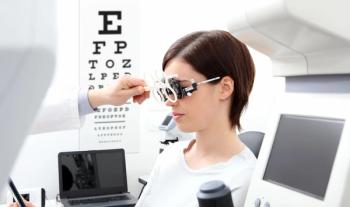
Optometry’s role in preventing falls in elderly patients
During the American Academy of Optometry's Academy 2014, Susan J. Leat, BSc, PhD, FCOptom, outlined the optometrist's role in preventing falls.
Denver- During the
"What they found-or at least what is quoted-is that falls and fractures were more frequent in the intervention group than in the control group in the first six months, although there was no difference in the second six months. I don't think this is what the investigators set out to find,” says Dr. Leat.
However, only 44 percent of the intervention group actually underwent some form of therapy.
“And only 30 percent received new glasses. On the other hand, 72 percent of the control group visited the optometrist or ophthalmologist in that time period. This illustrates a confounding factor-crossover or contamination between the two groups. And it illustrates the difficulty of planning these studies. What is likely to happen is that the control group might be more likely to get an eye exam themselves-it triggers their memories."
Furthermore, subjects with major changes (0.75 D or more in sphere or cylinder) had more falls. Accordingly, she says that when it comes to prescribing, “The one thing I believe is useful from that study is to try to avoid larger changes in power, and larger axis changes as well. That means we could be giving a partial prescription to these patients if they have a change in fraction. That probably means that we need to see them more frequently. For example, if they are having an increase in their hyperopia or moving towards myopia, we ultimately need to keep up with that refractive change."
She also suggested not giving new progressive-addition lenses (PALs) or bifocals to
Newsletter
Want more insights like this? Subscribe to Optometry Times and get clinical pearls and practice tips delivered straight to your inbox.
















































.png)


